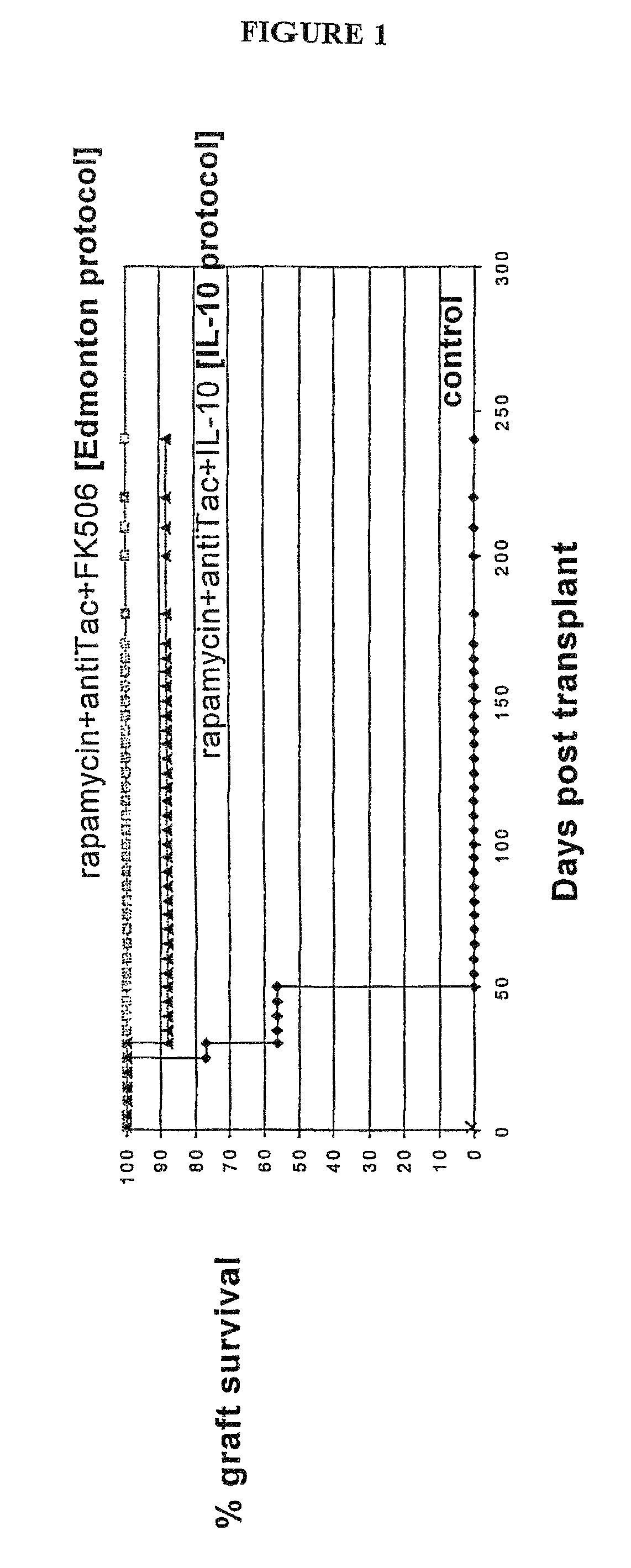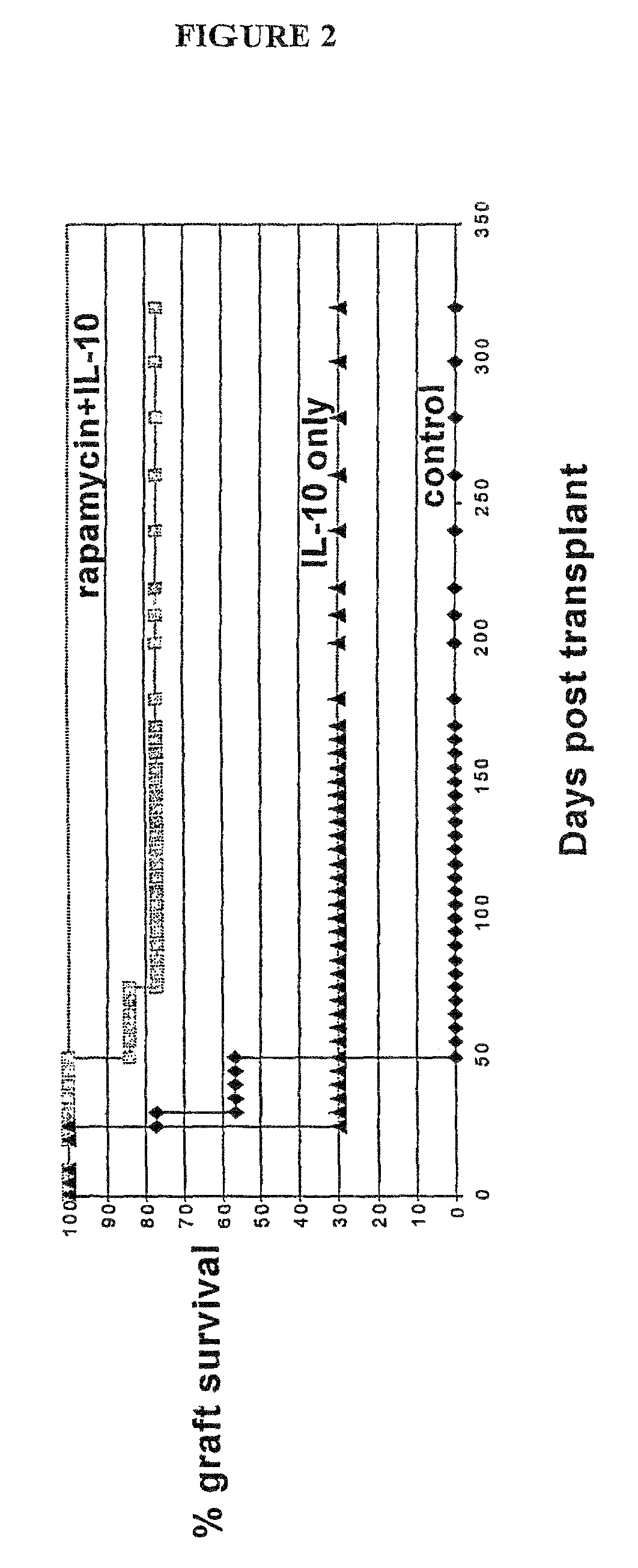Method for the treatment of automimmune diseases comprising administering rapamycin and IL-10
a technology for automimmune diseases and rapamycin, which is applied in the direction of drug compositions, immunological disorders, metabolism disorders, etc., can solve the problems of rapid graft destruction, complete destruction of transplanted organs, and major limitations of csa and fk506 in their various toxicities
- Summary
- Abstract
- Description
- Claims
- Application Information
AI Technical Summary
Benefits of technology
Problems solved by technology
Method used
Image
Examples
example 1
[0069]1. Allogeneic β-islet transplantation. A model of fully mismatched murine islet allotransplantation (C57BL / 6 into Balb / C) was used. Allogeneic pancreatic β-islet transplantation is becoming a valid alternative to insulin replacement therapy or to pancreas transplantation for the cure of type 1 diabetes. In the past years improved methods for the isolation and preservation of human β-cells and development of new immunosuppressive agents have significantly improved the clinical outcome of these transplants. Specifically, a new steroid-free immunosuppressive regimen based on rapamycin+antiTac+FK506 (the Edmonton protocol) has been recently shown to induce insulin independence in 80% of the patients at 1 year after transplant (Shapiro et al. 2000). These results largely exceed the ones obtained with all previous immunosuppressive combination therapies. However, the demonstration that this regimen may induce tolerance has not been produced. Importantly, the mechanism of action of F...
example 2
[0079]1. Preliminary results in type I diabetes. The tolerogenic effect of rapamycin+IL-10 was also evaluated in a setting of type I diabetes.
[0080]We believe that prevention of β-cell destruction, which is associated with progression to type I diabetes and is found at disease onset, can be prevented by:[0081]1. Down-regulation of the general ‘bystander’ inflammation within the pancreas.[0082]2. Blockade of the expansion of islet specific T effector cells.[0083]3. Induction and expansion of antigen-specific Tr cells.
[0084]In our proposed protocol, down-regulation of inflammation should be achieved by IL-10, and blockade of T effector cell expansion should be achieved by rapamycin. Neither IL-10 nor rapamycin prevent T cell priming and therefore they should allow induction of antigen-specific T regulatory cells, and as described below, IL-10 should promote the induction and expansion of Tr1 cells. We investigated the effect of rapamycin alone or in combination with IL-10 in treating ...
PUM
 Login to View More
Login to View More Abstract
Description
Claims
Application Information
 Login to View More
Login to View More - R&D
- Intellectual Property
- Life Sciences
- Materials
- Tech Scout
- Unparalleled Data Quality
- Higher Quality Content
- 60% Fewer Hallucinations
Browse by: Latest US Patents, China's latest patents, Technical Efficacy Thesaurus, Application Domain, Technology Topic, Popular Technical Reports.
© 2025 PatSnap. All rights reserved.Legal|Privacy policy|Modern Slavery Act Transparency Statement|Sitemap|About US| Contact US: help@patsnap.com



